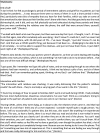Critical care work during COVID-19: a qualitative study of staff experiences in the UK
- PMID: 34006556
- PMCID: PMC8137198
- DOI: 10.1136/bmjopen-2020-048124
Critical care work during COVID-19: a qualitative study of staff experiences in the UK
Abstract
Objective: To understand National Health Service (NHS) staff experiences of working in critical care during the first wave of the COVID-19 pandemic in the UK.
Design: Qualitative study using semistructured telephone interviews and rapid analysis, interpreted using Baehr's sociological lens of 'communities of fate'.
Participants: Forty NHS staff working in critical care, including 21 nurses, 10 doctors and advanced critical care practitioners, 4 allied health professionals, 3 operating department practitioners and 2 ward clerks. Participants were interviewed between August and October 2020; we purposefully sought the experiences of trained and experienced critical care staff and those who were redeployed.
Setting: Four hospitals in the UK.
Results: COVID-19 presented staff with a situation of extreme stress, duress and social emergency, leading to a shared set of experiences which we have characterised as a community of fate. This involved not only fear and dread of working in critical care, but also a collective sense of duty and vocation. Caring for patients and families involved changes to usual ways of working, revolving around: reorganisation of space and personnel, personal protective equipment, lack of evidence for treating COVID-19, inability for families to be physically present, and the trauma of witnessing extreme patient acuity and death on a large scale. The stress and isolation of working in critical care during COVID-19 was mitigated by strong teamwork, camaraderie, pride and fulfilment.
Conclusion: COVID-19 has changed working practices in critical care and profoundly affected staff physically, mentally and emotionally. Attention needs to be paid to the social and organisational conditions in which individuals work, addressing both practical resourcing and the interpersonal dynamics of critical care provision.
Keywords: COVID-19; intensive & critical care; organisation of health services; qualitative research.
© Author(s) (or their employer(s)) 2021. Re-use permitted under CC BY. Published by BMJ.
Conflict of interest statement
Competing interests: None declared.
Figures





References
-
- ICNARC . ICNARC report on COVID-19 in critical care: England, Wales and Northern Ireland, 2020.
-
- Data.gov.uk . Coronavirus (COVID-19) in the UK. Patients admitted to hospital 2020. Available: https://coronavirus.data.gov.uk/details/healthcare [Accessed 9 Nov 2020].
-
- NAO . Investigation into how government increased the number of ventilators available to the NHS in response to COVID-19, 2020. Available: https://www.nao.org.uk/report/increasing-ventilator-capacity-in-response...
Publication types
MeSH terms
Grants and funding
LinkOut - more resources
Full Text Sources
Other Literature Sources
Medical
